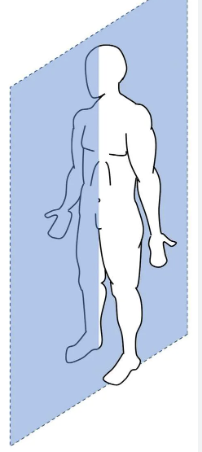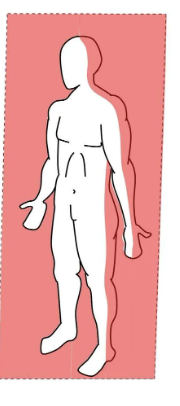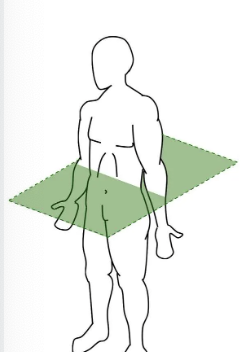intro to human body
1/28
There's no tags or description
Looks like no tags are added yet.
Name | Mastery | Learn | Test | Matching | Spaced |
|---|
No study sessions yet.
29 Terms
Regions
specific names used to identify areas of the body.
Anatomical position
Body upright and facing forward, Feet parallel, Arms at sides with palms facing forward
the ideal way for a body to face when naming parts
Superior
Up (towards head)
Inferior
Down (towards feet)
Cephalic
second word for up
Caudal
second word for down
Anterior
in the front of the body
Posterior
towards the back
Medial
towards the middle line of body
Lateral
away from the middle line of body
• Proximal
closer to trunk (center) of body
Distal
away from trunk of body

sagittial plane

frontal

tranverse
extension
increases angle between two body parts
< to —-
flexion
decreases angle between two body parts
—- to >
external rotaition
rotation away from the midline of the body
internal location
rotation towards the midline of the body
range of motion
extent of possible movement of a joint
active range of motion
what you can do with your muscles
pasive range of motion
a motion with someone assisting
resisted range of motion
paitent resising force applied to them
epithelial tissue
skin
connective tissue
fat, bones, tendons
muscle tissues
all muscles
nervous tissue
brain, spinal cord
connective tissue- loose
high levels of ground substance, fewer fibers, includes adipose tissue, and superficial fasica
connective tissue- dense